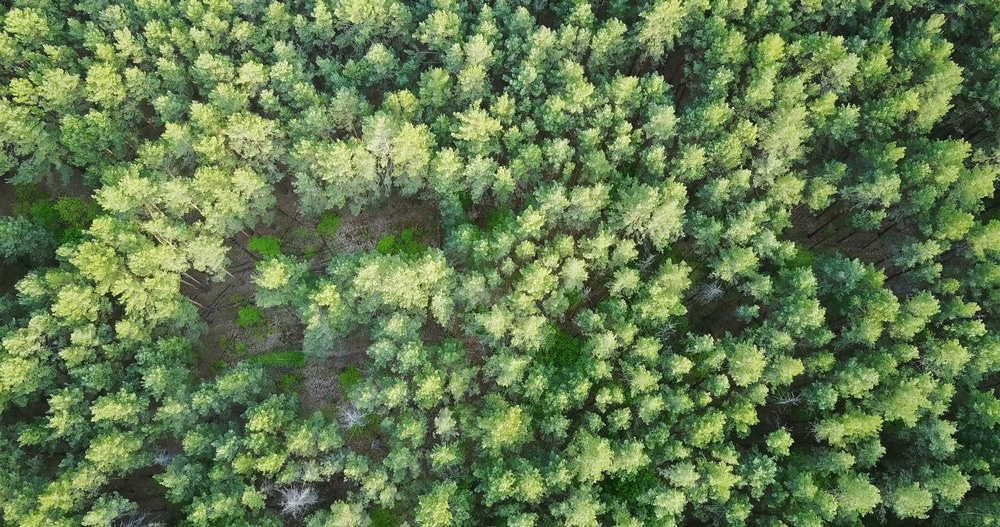Not all pollution is caused by humans; according to new UC Riverside research, when global temperatures rise by 4 °C, harmful plant emissions and dust rise by up to 14%.

Image Credit: Kate_Koreneva/Shutterstock.com
The study does not account for a concomitant increase in human-made sources of air pollution, which has already been anticipated by other studies.
We are not looking at human emissions of air pollution, because we can change what we emit. We can switch to electric cars. But that may not change air pollution from plants or dust.
James Gomez, Study Lead Autor and Doctoral Student, University of California, Riverside
Specifics of the future air quality degradation caused by these natural sources have now been published in the journal Communications Earth & Environment. Approximately two-thirds of future pollution is expected to come from plants.
Biogenic volatile organic compounds, or BVOCs, are chemicals produced by plants.
The smell of a just-mowed lawn, or the sweetness of a ripe strawberry, those are BVOCs. Plants are constantly emitting them.
James Gomez, Study Lead Author and Doctoral Student, University of California, Riverside
BVOCs are harmless on their own. They do, however, produce organic aerosols when they react with oxygen. These aerosols can end up causing infant mortality and childhood asthma, and also heart disease and lung cancer in adults when inhaled.
Plants increase BVOC production for two reasons: increased atmospheric carbon dioxide and increased temperatures. Both of these factors are expected to rise further.
To be evident, growing plants is a net positive for the environment. They help to control global warming by reducing the amount of carbon dioxide in the atmosphere. People will not be harmed by BVOCs emitted by small gardens.
Your lawn, for example, won’t produce enough BVOCs to make you sick. It’s the large-scale increase in carbon dioxide that contributes to the biosphere increasing BVOCs, and then organic aerosols.
James Gomez, Study Lead Author and Doctoral Student, University of California, Riverside
Dust from the Saharan desert is expected to be the second-largest contributor to future air pollution.
“In our models, an increase in winds is projected to loft more dust into the atmosphere,” stated Robert Allen, associate professor of Earth and Planetary Sciences at UCR and co-author of the study.
As the climate warms, more Saharan dust will be blown across the world, with elevated amounts of dust in Africa, the eastern United States, and the Caribbean. Dust over Northern Africa, including the Sahel and Sahara, is expected to increase as West African monsoons become more intense.
Organic aerosols and dust as well as sea salt, black carbon, and sulfate, are classified as PM2.5 airborne pollutants because they have a diameter of 2.5 µm or less. In this study, the rise in naturally sourced PM2.5 pollution increased in direct proportion to CO2 levels.
“The more we increase CO2, the more PM2.5 we see being put into the atmosphere, and the inverse is also true. The more we reduce, the better the air quality gets,” Gomez said.
For instance, if the climate warms by only 2 °C, the study found only a 7% increase in PM2.5. Because the study concentrates on human health impacts, all these findings only apply to changes in air quality over land.
The researchers hope that the ability to enhance air quality will spur quick and decisive action to reduce CO2 emissions. Without it, temperatures could rise by 4 °C by the end of the century, though this could happen sooner.
Gomez cautions that CO2 emissions must be drastically reduced to have a positive impact on future air quality.
Gomez concluded, “The results of this experiment may even be a bit conservative because we did not include climate-dependent changes in wildfire emissions as a factor. In the future, make sure you get an air purifier.”
Journal Reference:
Gomez, J., et al. (2023) The projected future degradation in air quality is caused by more abundant natural aerosols in a warmer world. Communications Earth & Environment. doi.org/10.1038/s43247-023-00688-7.